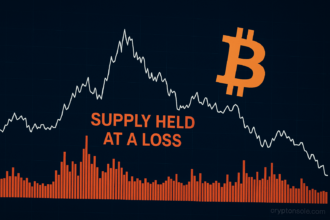Summary
The U.S. Commodity Futures Trading Commission (CFTC) has announced a new initiative to allow tokenized collateral, including stablecoins, to be used in derivatives markets. Acting Chairman Caroline D. Pham invited public comments through October 20, 2025, to help shape policy around this innovation.
Key Details
- What’s proposed: The CFTC is exploring how non-cash collateral—especially stablecoins and other tokenized assets—can satisfy margin and collateral6 requirements in derivatives trading.
- Public comment period: Stakeholders, industry participants, and the general public are asked to submit feedback by October 20 via the CFTC’s website.
- Regulatory context: This initiative is part of the CFTC’s broader “crypto sprint” and is aligned with recommendations from the President’s Working Group on Digital Asset Markets and the CFTC’s Global Markets Advisory Committee.
- Industry support: Firms such as Circle, Coinbase, Ripple, and Crypto.com have expressed support for the move.
Why It Matters
- Capital Efficiency & Liquidity Enhancement
Allowing tokenized collateral may reduce friction in derivatives markets, lower costs, and enable more dynamic capital deployment. This could help market participants “put their dollars to work smarter,” as Pham framed it. - Bridging TradFi & Digital Assets
Currently, derivatives markets generally rely on cash or highly liquid securities for collateral. Integrating stablecoins as collateral would represent a convergence point between traditional finance (TradFi) infrastructure and digital asset innovation. - Regulatory & Risk Considerations
Tokenized collateral introduces new challenges—valuation, custody, settlement finality, reserve backing, governance of token issuers, and the risk of stablecoin depegging. The public comment process is intended in part to address these concerns. - U.S. Leadership in Crypto Regulation
By proactively exploring how to integrate stablecoins into derivatives, the CFTC may aim to maintain the U.S. as a regulatory leader in tokenization and digital8 asset markets rather than cede innovation to other jurisdictions.
Challenges & Risks
- Stablecoin reliability & reserves: Any stablecoin used as collateral2 would need stringent reserve audits, transparency, and mechanisms to deal with redemption or de-peg events.
- Custody & settlement: Ensuring secure custody of tokenized assets, and guaranteeing settlement finality on blockchains, is nontrivial—especially when interfacing with clearinghouses and legacy systems.
- Regulatory overlap: This initiative must coordinate with other regulatory regimes (SEC, banking regulators) and recent laws such as the GENIUS Act, which codified stablecoin oversight.
- Market stability & risk amplification: Use of tokenized assets as collateralJ could introduce new feedback loops or liquidity risks if value declines rapidly.
Outlook & Next Steps
- Reviewing stakeholder feedback: After October 20, the CFTC will review submitted comments and likely propose more detailed guidance or rule amendments.
- Pilot programs & sandbox approaches: Pham has previously proposed regulatory sandbox or pilot programs to test tokenized collateral in controlled environments.
- Integration with stablecoin regulation: Successful implementation may depend on parallel stablecoin regulatory clarity under U.S. law, particularly regarding issuer reserves, audits, and oversight.
- Global alignment: The U.S. move may prompt other jurisdictions to consider similar frameworks, accelerating global adoption of tokenized collateral in derivative markets.
07MUKAMK












